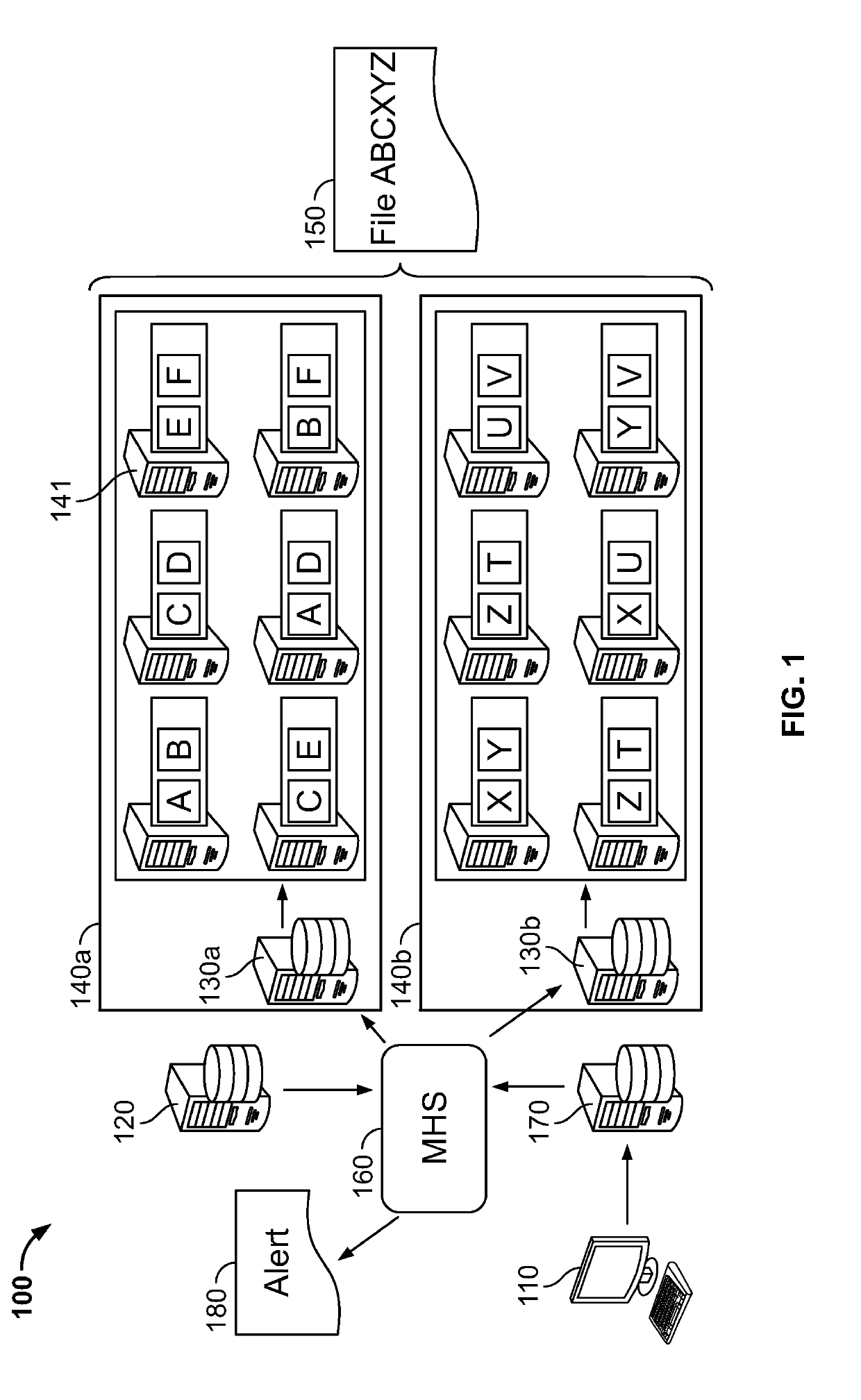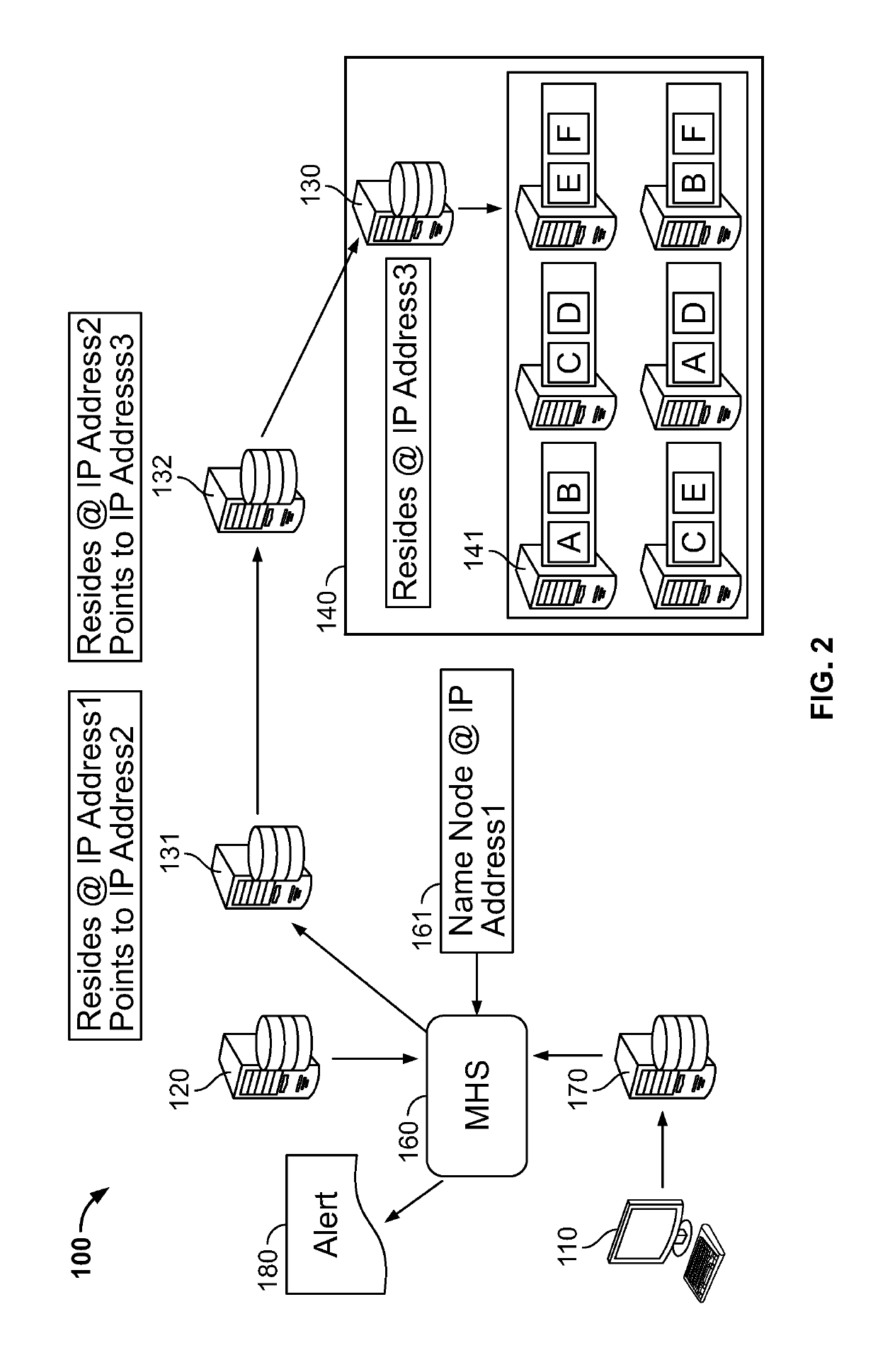Distributed data monitoring device
a data monitoring and data technology, applied in the direction of error detection/correction, redundancy hardware error correction, instruments, etc., can solve the problems of insufficient complexity and complexity of independent operating devices for data processing, myriad complexities and complications, and the system itself must be complex enough to address the complexity of the distributed data environmen
- Summary
- Abstract
- Description
- Claims
- Application Information
AI Technical Summary
Benefits of technology
Problems solved by technology
Method used
Image
Examples
embodiments
[0043]As illustrated in FIG. 1, in an embodiment, there is an improved distributed data environment 100 comprising diagnostics for improving data processing and preempting cluster failures or other disfunctions is provided. In an embodiment, the system includes hardware and / or software configured to perform a diagnostic which detects a disfunction, deviation from a defined setting, and or a property that exceeds a pre-defined threshold. In an embodiment, in response to the results of the diagnostic, an alert message is issued to a party tasked with addressing the response. In an embodiment, in reply to the alert message, the party enacts a remedy. The remedy may include but is not limited to deactivating hardware and / or software or components thereof, activating supplemental hardware and / or software to replace deactivated hardware and / or software, and changing configurations settings of one or more services to accurately depict the result of the deactivation and supplemental activat...
PUM
 Login to View More
Login to View More Abstract
Description
Claims
Application Information
 Login to View More
Login to View More - R&D
- Intellectual Property
- Life Sciences
- Materials
- Tech Scout
- Unparalleled Data Quality
- Higher Quality Content
- 60% Fewer Hallucinations
Browse by: Latest US Patents, China's latest patents, Technical Efficacy Thesaurus, Application Domain, Technology Topic, Popular Technical Reports.
© 2025 PatSnap. All rights reserved.Legal|Privacy policy|Modern Slavery Act Transparency Statement|Sitemap|About US| Contact US: help@patsnap.com



